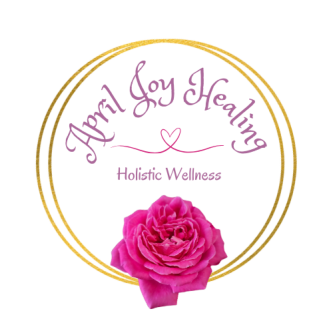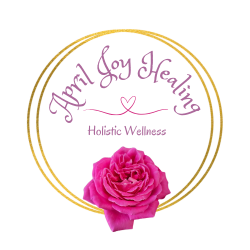Your body is approximately 60% water, and every single cell depends on adequate hydration to function optimally. Yet, despite this fundamental need, many of us walk around chronically dehydrated without even realizing it.
In this guide, we'll explore the essentials of hydration that can revolutionize your energy levels, mental clarity, and overall well-being. Whether you're a busy entrepreneur juggling multiple responsibilities or someone simply looking to optimize your health, mastering hydration basics is one of the most powerful—and accessible—steps you can take.
Why Hydration Matters More Than You Think
Before we jump into practical strategies, let's understand what happens when your body receives adequate hydration versus when it doesn't. Proper hydration supports:
Cellular function and nutrient transport
Temperature regulation through sweating
Joint lubrication and cushioning
Toxin elimination through kidneys and liver
Mental clarity and cognitive performance
Energy production at the cellular level
When you're even mildly dehydrated—losing just 2% of your body weight in fluids—you may experience fatigue, difficulty concentrating, headaches, and mood changes. For small business owners and wellness practitioners, these symptoms can significantly impact productivity and client interactions.
Setting Your Daily Water Intake Goal: The 8x8 Rule and Beyond
The classic recommendation of "8 glasses or 64 ounces per day" serves as an excellent starting point, but your individual needs may vary based on several factors:
Factors That Increase Your Water Needs:
Physical activity and exercise intensity
Climate and environmental temperature
Overall health status and medications
Pregnancy or breastfeeding
Alcohol and caffeine consumption
A More Personalized Approach:
A more tailored method involves calculating based on body weight: aim for half to one ounce of water per pound of body weight. For example, a 150-pound person would target 75-100 ounces daily, adjusting based on activity level and environmental factors. Or half your weight in ounces; 150-pound person would need 75 ounces of water.
Pro Tip: Start your day with 16-20 ounces of water upon waking. After 6-8 hours without fluid intake during sleep, your body needs immediate rehydration to kickstart metabolic processes.
Tracking Your Water Intake: Simple Systems That Work
Consistency is key when building any healthy habit, and hydration is no exception. Here are proven methods to monitor your daily water consumption:
Digital Solutions:
MyFitnessPal: Comprehensive nutrition tracking with water logging features
WaterMinder: Dedicated hydration app with customizable reminders
Hydro Coach: Personalized hydration plans based on your lifestyle
Analog Approaches:
Water bottle method: Use a marked water bottle to track refills throughout the day
Journal tracking: Simple tally marks in your daily planner
Rubber band system: Move bands from one wrist to another with each glass consumed
Visual Cues:
Keep a large water bottle visible on your desk or workspace. The constant visual reminder naturally encourages regular sipping throughout the day.
Recognizing Dehydration: Your Body's Warning Signs
Understanding dehydration symptoms helps you respond quickly before they impact your well-being. Watch for these early indicators:
Mild Dehydration Signs:
Increased thirst (obviously, but often ignored)
Darker yellow urine
Slight fatigue or low energy
Dry mouth or sticky saliva
Decreased urination frequency
Moderate Dehydration Symptoms:
Headaches or dizziness
Difficulty concentrating
Irritability or mood changes
Dry skin that lacks elasticity
Constipation
The Pinch Test:
Gently pinch the skin on the back of your hand. Well-hydrated skin snaps back immediately, while dehydrated skin takes longer to return to normal.
Urine Color Chart:
Your urine color serves as an excellent hydration indicator:
Pale yellow: Well hydrated
Dark yellow: Mild dehydration
Amber or honey-colored: Significant dehydration requiring immediate attention
Infused Water: Making Hydration Delicious and Exciting
Plain water can feel monotonous, leading to decreased consumption. Infused waters offer a flavorful solution without added sugars or artificial ingredients.
Popular Flavor Combinations:
Citrus Blends:
Lemon + lime + mint
Orange + grapefruit slices
Lemon + cucumber + basil
Berry Infusions:
Strawberry + basil
Blueberry + lemon + thyme
Raspberry + lime + mint
Herbal Options:
Cucumber + mint (cooling and refreshing)
Watermelon + rosemary (unique and sophisticated)
Apple + cinnamon stick (warming and comforting)
Infusion Preparation Tips:
Muddle gently: Lightly crush herbs to release essential oils without making water bitter
Timing matters: Allow 2-4 hours for optimal flavor development
Fresh is best: Replace ingredients every 24-48 hours
Temperature variation: Try both cold and room temperature versions
Hydration Throughout Your Day: A Practical Schedule
Creating a hydration routine helps ensure consistent intake without overwhelming your system:
Upon waking (6-7 AM): 16-20 oz to rehydrate after sleep
Mid-morning (10 AM): 8-12 oz with a healthy snack
Pre-lunch (12 PM): 8 oz before eating to aid digestion
Afternoon (2-3 PM): 12-16 oz during the energy dip period
Pre-dinner (5-6 PM): 8 oz before your evening meal
Evening wind-down (8 PM): Final 8 oz, stopping 2 hours before bed
Common Hydration Mistakes to Avoid
Waiting Until You're Thirsty
Thirst is a late indicator of dehydration. By the time you feel thirsty, you're already behind on fluid intake.
Relying Solely on Caffeinated Beverages
While coffee and tea contribute to fluid intake, caffeine has mild diuretic effects. Balance caffeinated drinks with plain water.
Ignoring Electrolyte Balance
During intense exercise or hot weather, you lose electrolytes through sweat. Consider natural electrolyte sources like coconut water or adding a pinch of high-quality sea salt to your water.
Drinking Too Much Too Fast
Chugging large amounts of water can overwhelm your kidneys and dilute electrolytes. Steady, consistent intake throughout the day is more effective.
Hydration for Optimal Wellness Business Performance
As wellness professionals, your personal hydration directly impacts your ability to serve clients effectively. Proper hydration supports:
Clear communication during consultations and sessions
Sustained energy for long workshop days
Mental sharpness for creative content creation
Physical stamina for hands-on treatments
Emotional balance when handling challenging client situations
Beyond Water: Hydrating Foods and Beverages
Remember that approximately 20% of your daily fluid intake comes from food. Include these hydrating options:
High Water Content Foods:
Watermelon (92% water)
Cucumber (95% water)
Lettuce and leafy greens (90-95% water)
Tomatoes (94% water)
Bell peppers (92% water)
Hydrating Beverages:
Herbal teas (caffeine-free)
Coconut water (natural electrolytes)
Fresh vegetable juices
Bone broth (minerals and electrolytes)
Creating Your Personal Hydration Action Plan
Ready to transform your hydration habits? Here's your step-by-step implementation strategy:
Calculate your personal daily water goal based on body weight and activity level
Choose your tracking method—digital app or simple journal system
Select 2-3 infused water recipes to try this week
Set up visual reminders in your workspace and home
Create a daily hydration schedule that fits your lifestyle
Monitor your body's signals and adjust intake accordingly
Your Hydration Journey Starts Now
Proper hydration isn't just about drinking more water—it's about creating sustainable systems that support your overall wellness journey. By implementing these evidence-based strategies, you're not just improving your hydration; you're building a foundation for enhanced energy, mental clarity, and optimal health.
Start small, stay consistent, and watch how this fundamental wellness practice transforms your daily experience. Your body, mind, and business will thank you for prioritizing this essential aspect of self-care.
Ready to take your wellness journey to the next level? Join our monthly Tea & Talk Sessions in my Skool community, where we explore practical wellness strategies like these in a supportive community setting. Join my Skool community follow this hydration challenge and recieve the benefits of staying hydrated.
What's your biggest hydration challenge? Share your thoughts and questions in the comments below—let's support each other in building healthier habits that stick!


